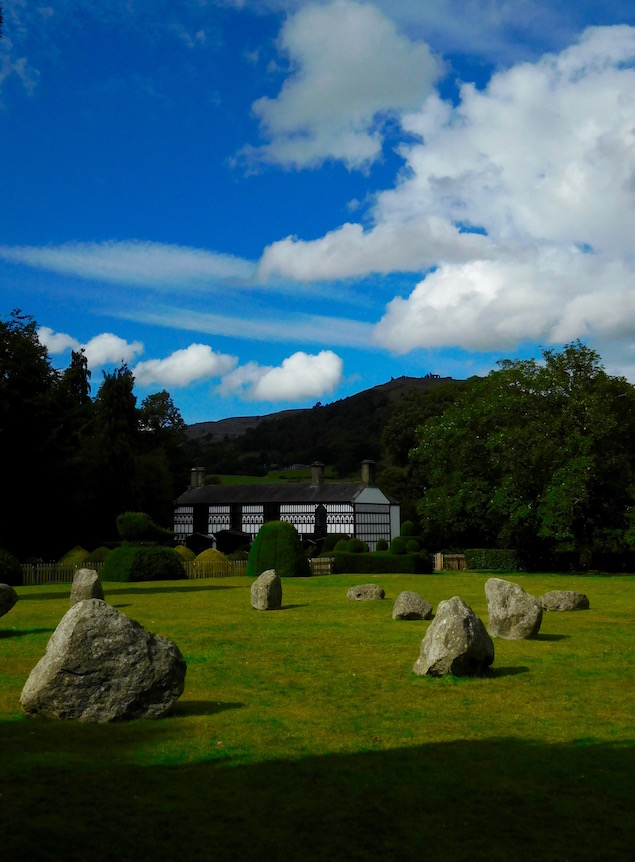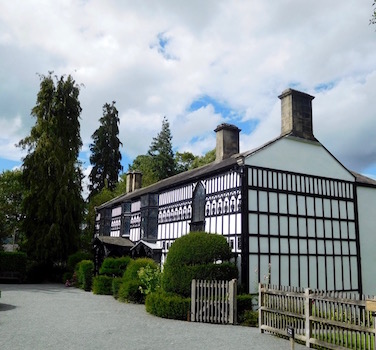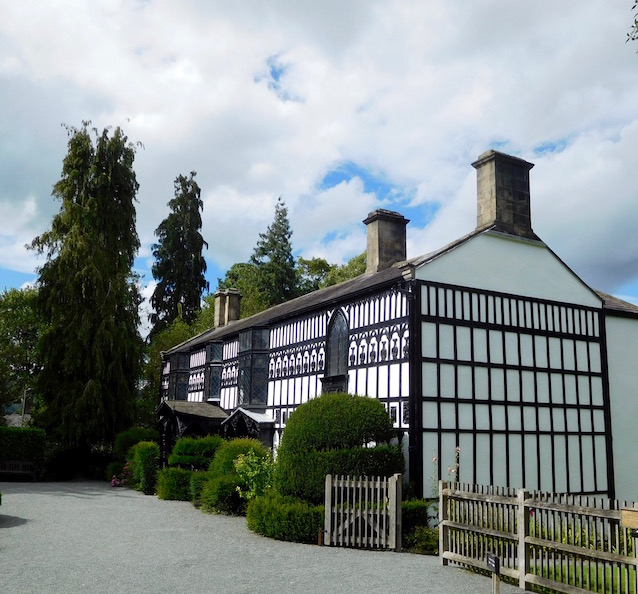July 2017
Ahhhhhh. Finally. I feel like I don't even have to actually write this blog post - just writing the title for it is enough. You see I came up with it like 8 months ago when I first wanted to visit Llangollen, but it's juuuuust far enough from Aberdyfi that I decided to wait until I hiked to get there. I've wanted to write that for. so. long.
But also, I've wanted to go to Llangollen since I got here. Known for several things including Val Crucis Abbey (the last cistercian abbey built in Wales in 1201), a four arched bridge (that's several hundred years old), and the International Eistedfodd festival (a music and poetry festival started after WWII to promote international peace and understanding) - what interested me most about going to Llangollen was it's pair of 18th century ladies.
Or, you know, lladies. Because I'm in Wales. Home of the very difficult to pronounce letter ll. (Sorry in advance to Welsh speakers, who will happily tell you that 'l' and 'll' are two very different letters. Also the second is not a 'y' spanish speakers!)
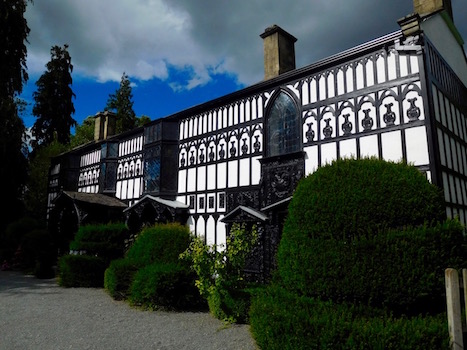
Anyhoo, I'd first read about these women in a book called 'I Never Knew That About Wales', where it says they 'eloped from their home in Ireland...fell in love with Wales and decided to stay.' It goes on to describe all the famous people they hosted - Wordsworth, the Duke of Wellington, among others. It doesn't say much about their relationship, but my other guidebook calls them the country's most celebrated lesbians.
So, while I can't possibly understand what it would be like to be LGBT in any century in Wales (as I'm not part of the community), I certainly couldn't understand what it would be like in the 18th century, and one of the things I put on my list to go see in Wales was their house (now a museum) in Llangollen.

Later in the year I was surprised by my first issue of the National Trust members magazine which was dedicated to historic properties relevant to LGBT individuals, in celebration of 50 years of decriminalization of homosexuality (which horribly had been punishable in some cases by chemical castration). It was a very interesting read, and although the LLadies' house isn't a National Trust property, so it wasn't included, it just confirmed I clearly needed to take a visit.
I finally made it
And so P and I pulled up to the museum after seeing the Pontcysyllte Aqueduct nearby, since I'd be walking further north into the Clwydian Mountain Range in the morning, and P was going home with the car. So, basically, it's a house and gardens with a stone circle set on the lawn - commemorating the first International Eisteddfod. We actually got there just before the last entrance time so we quickly got tickets and basically ran to the house.

Since we weren't allowed to take pictures inside (which is why all my pictures are the same), I'll just tell you that it was a whole lot of carved wood. Like, wood carved like I've never seen before. It was unclear to me how much of this was original and how much was along the same lines as the mock-Tudor half timbering on the outside that was added afterwards. Carved wood, and knick-knacks as far as the eye could see. Because they loved knick knacks.
But the most interesting part, really, were the descriptive panels telling their story. So, what you have is Lady Eleanor Butler (39) and Sarah Posonsby (23), both Anglo-Irish nobility living in Kilkenny and Woodstock, Ireland. Eleanor's siblings have all married, and clearly at 39 she's well into old-maid-dom (it didn't help matters that she was 'bookish'), and her family decides to ship her to a nunnery. Because why not. Orphaned Sarah, meanwhile, is suffering the unwanted attentions of her middle-aged adoptive father, who wanted her to replace her very-much-still-alive but sick adoptive mother. So they decide to 'elope' (which at the time just meant run away together).

They took a gun and Sarah's dog, and dressed as men tried to get the ferry to Wales. When it didn't go that night they were caught while hiding in a barn. After a very short while back at home, Eleanor ran away again, hiding in Sarah's room, where a housemaid Mary kept her secretly fed. At this point their families thought they were causing more trouble than they were worth, and so gave them some money and told them to get out.
So they took their maid, and went off to live in a 'Romantic' style - as popularized by Rousseau (simplified - a life of individualism and glorifying nature) - fell in love with Llangollen, fixed up a farm house and lived together for 50 years.
OK, so now I get to the point. Of course, now we're like 'These are 18th century lesbians who lived together for 50 years, obviously they just didn't say they were lesbians.' They slept in the same bed, held hands, called each other beloved, wore clothing similar to men's and kept their hair short (sorry for perpetuating stereotypes by even saying this, but that's what people said about these women).
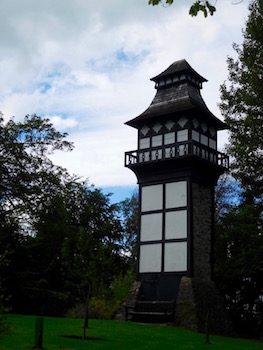
But the interesting thing about visiting the house was how they dealt with this. The entire concept as it's understood now didn't even really exist (consciously anyway) in England at that time, outside of a few circles. The fascination the travelling nobility had with these women living together wasn't because they thought they were lesbians - it's because they were women, living together. They read, wrote, studied the world, and didn't have men they were attached to - this 'romantic' life for two women was itself a novelty.
But they slept in the same bed! I know I know. Here's how the Lladies 20th century biographer counters all the 'obvious hallmarks' we see today - first, the Lladies vehemently denied their relationship was anything but chaste (not that I believe that matters, since really who is going to admit something that at the time was seen as sinful is what they're doing? Really?). But also, many women of that time who were sisters or close friends slept in the same bed and held hands, they called each other terms of endearment now saved only for sexual partners, and the clothes were practical for the country and the hair was popular in Paris at the time. It seems like, in the context of the times, the main outlandish thing they were doing was learning and reading.
And when you read more about it, and looked at more paintings of the two Lladies, elderly and grey, holding hands and helping each other stand up, and see their notes and their collection of trinkets, you start to realize that really you don't care whether they were lesbians or not. Or rather, that the idea of a definition like that is kind of ridiculous. These two women clearly loved each other - for god's sake they spent 50 years together and not only didn't kill each other they seemed to continuously enjoy each other's company.

If they loved each other as friends, then we should be frankly jealous that closeness and friendship like that isn't something women are able to even conceive of anymore without assuming 'something else'. They read to each other, enriched each other's minds, loved each other's company, cared for each other and were generally exceedingly close-knit emotionally and in reality.
And if there was 'more to it' - seriously, who really cares? Everyone seems to take it in stride that one of them was going to be sold off unwillingly to the church, and that the other one's much older adopted father was trying to marry her against her will while his wife was still alive - but somehow what's really shocking is that they might have slept together. Seriously. Think about that for a second.
So basically, I went in wondering what two 18th century lesbians were doing entertaining famous people in Wales, and left just feeling glad they found each other, in whatever way worked for them - because screw everyone else, they wanted to. What a great place.






